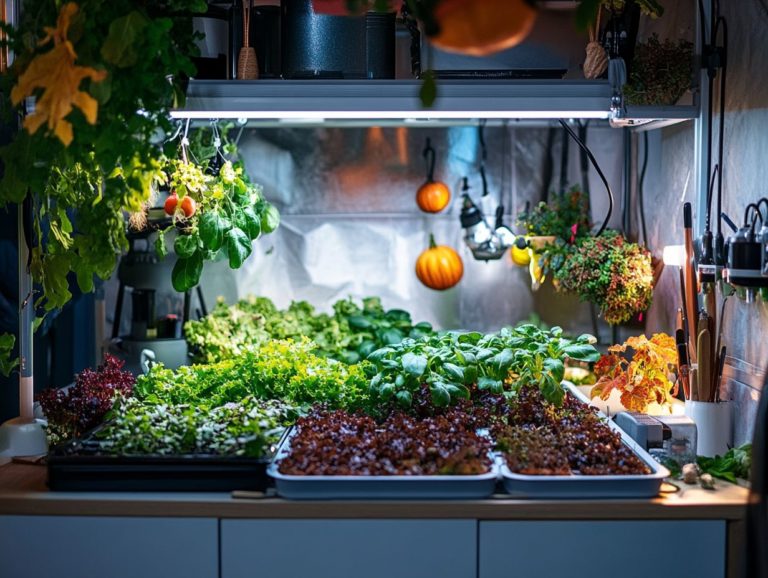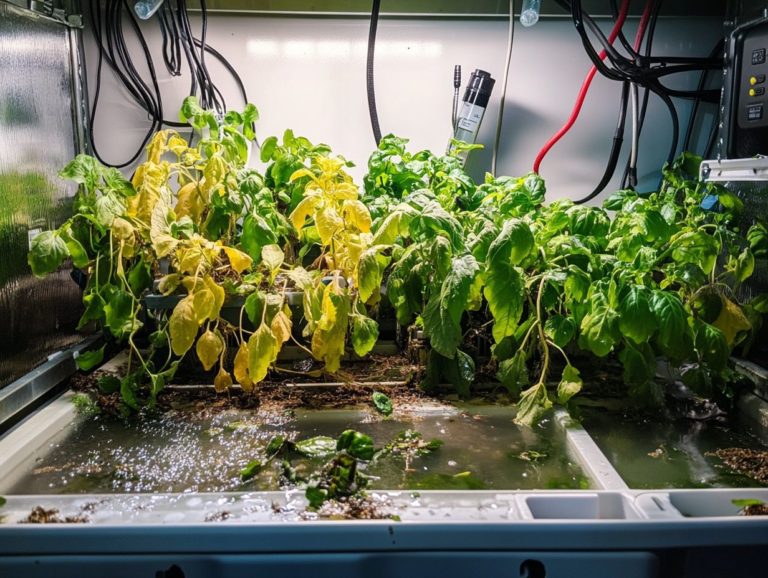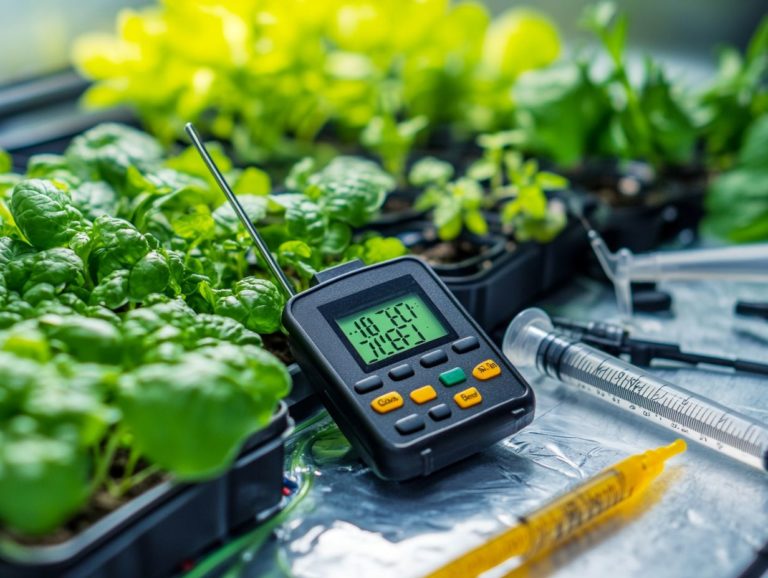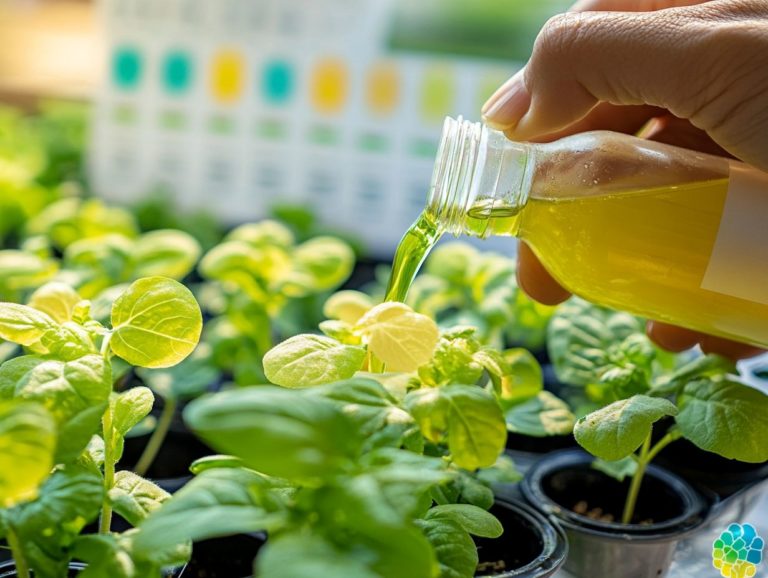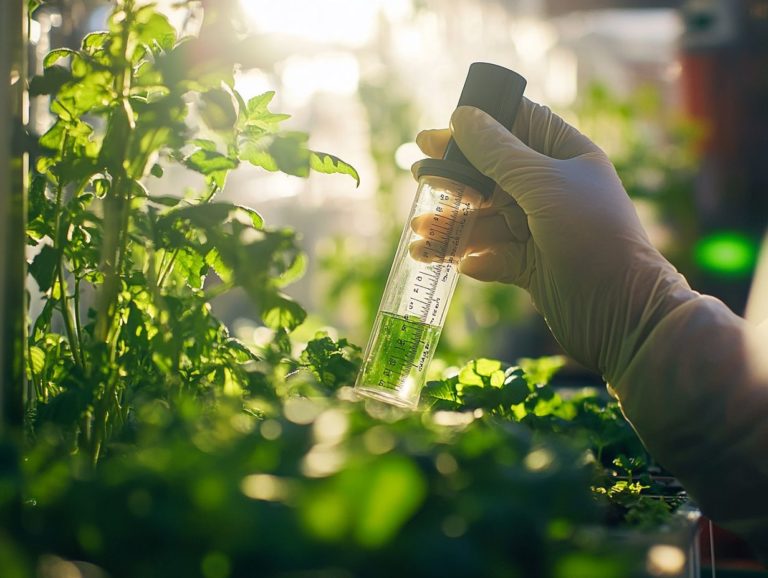Preventing Root Disease in Hydroponics
Root disease can be a stealthy adversary in hydroponic systems, quietly undermining even the most dedicated growers. Discover how to protect your hydroponic garden from stealthy root diseases and keep your plants thriving!
Grasping the different types of root diseases, along with their causes and symptoms, is essential for maintaining robust plants.
This article delves into the environmental factors and hygiene practices that foster root disease. It also offers strategies for early detection and actionable tips for prevention and treatment.
With an emphasis on long-term maintenance, you ll be empowered to ensure your roots thrive and your hydroponic garden flourishes.
Contents
- Key Takeaways:
- Understanding Root Disease in Hydroponics
- Causes of Root Disease in Hydroponics
- Symptoms of Root Disease in Hydroponics
- Preventing Root Disease in Hydroponics
- Treating Root Disease in Hydroponics
- Long-Term Maintenance for Healthy Roots in Hydroponic Systems
- Frequently Asked Questions
- What is root disease in hydroponics and why is it important to prevent?
- What are some common root diseases in hydroponics?
- How can I prevent root disease in my hydroponic system?
- Can I use chemical treatments to prevent root disease in hydroponics?
- Are there natural methods for preventing root disease in hydroponics?
- How important is proper plant nutrition in preventing root disease in hydroponics?
Key Takeaways:
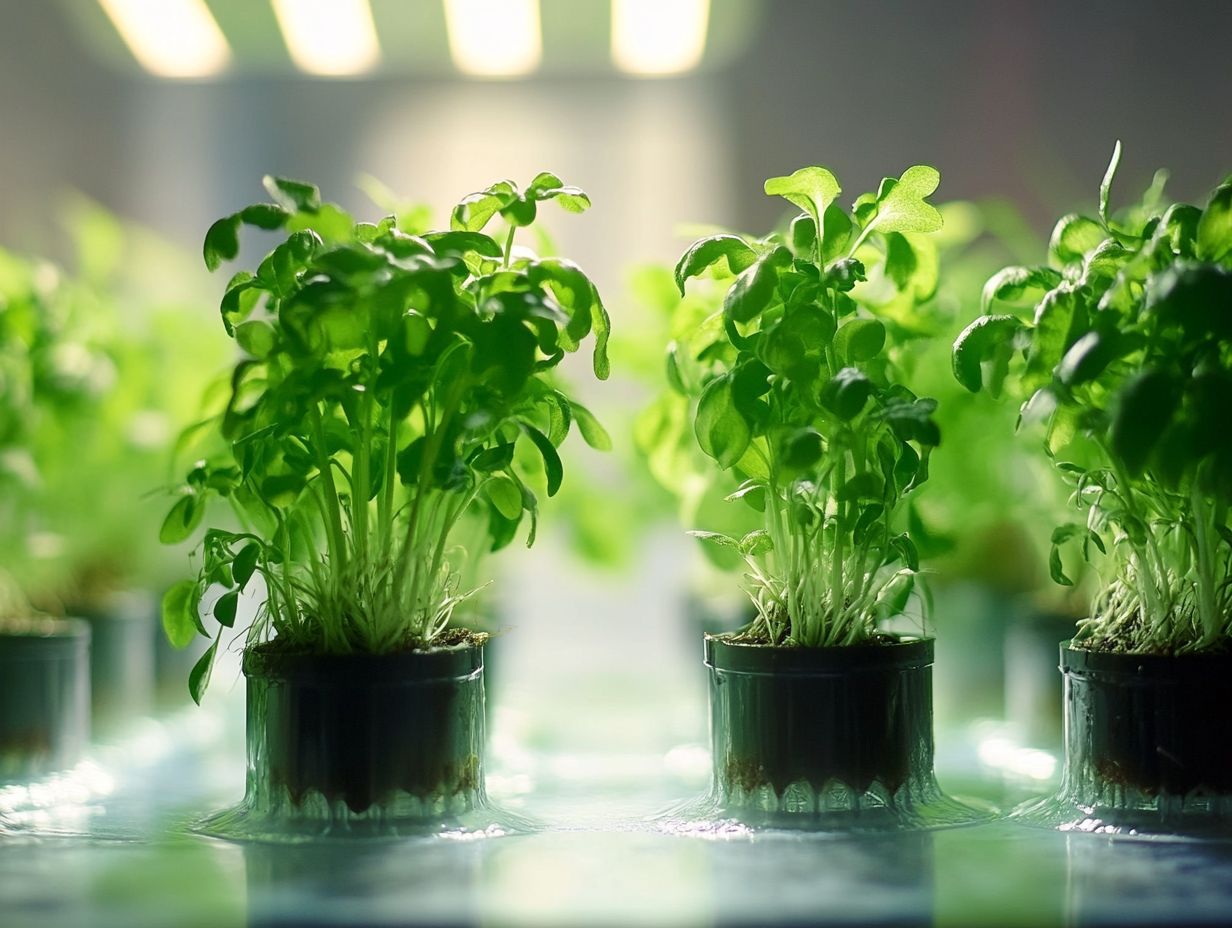
- Learn about root diseases to prevent and treat them effectively.
- Keep your growing area clean and stable to avoid root diseases.
- Regular checks and prompt action are key to keeping your plants healthy.
Understanding Root Disease in Hydroponics
Understanding root disease in hydroponics is essential for ensuring the vitality of your aquatic gardening system. Various root diseases, particularly root rot caused by harmful germs like Pythium and Phytophthora, can wreak havoc on your hydroponic garden if not addressed swiftly.
These ailments can hinder nutrient uptake and stunt root growth, resulting in weak transplants and compromised plant health. By concentrating on the underlying causes, symptoms, and prevention strategies, you can effectively manage root health, enabling your hydroponic systems to flourish.
Beneficial bacteria play a critical role in disease management and support robust root health.
Common Types of Root Diseases
Common types of root diseases in hydroponic systems include root rot, primarily caused by harmful germs like Pythium and Phytophthora. These can lead to severe root damage and significantly compromise plant health.
Other significant diseases, such as Fusarium and Rhizoctonia, can also create chaos. They often stem from poor water quality or nutrient imbalances. Symptoms typically manifest as yellowing leaves, stunted growth, and an overall decline in vigor, all telling signs that the roots are in trouble.
The health of your root system is vital; these diseases can hinder nutrient uptake, effectively starving your plants of essential elements. To keep root diseases at bay, implementing effective prevention measures is key.
Maintaining optimal pH levels, ensuring proper water circulation, and using sterilized equipment can significantly enhance your management strategies, allowing your hydroponic system to thrive.
Causes of Root Disease in Hydroponics
Understanding what triggers root diseases is crucial for protecting your plants. Root disease in hydroponics can arise from various factors, often rooted in environmental control issues, insufficient moisture levels, and lapses in hygiene practices.
It’s crucial for hydroponic systems to uphold optimal conditions to prevent the growth of harmful germs and bacteria, particularly anaerobic bacteria that flourish in stagnant water, resulting in root rot.
By grasping these underlying causes, you can adopt effective disease prevention strategies to safeguard your crops from root diseases, ensuring robust and healthy root systems.
Environmental Factors
Environmental factors greatly impact root disease in hydroponics. Focus on temperature control, moisture levels, and oxygen availability.
Maintaining an optimal temperature is crucial; extreme heat or cold can stress your plants, making them more susceptible to infections. Excessive moisture can lead to conditions without oxygen in the root zone, promoting the growth of harmful pathogens.
Implementing proper aeration techniques, like using air stones or optimizing your nutrient solutions, enhances oxygen availability, which is vital for healthy root development.
Consistent monitoring of these environmental parameters empowers you to manage diseases effectively. By understanding and controlling these factors, your hydroponic system can sustain vigorous plant growth while minimizing disease risks.
Poor Hygiene and Maintenance
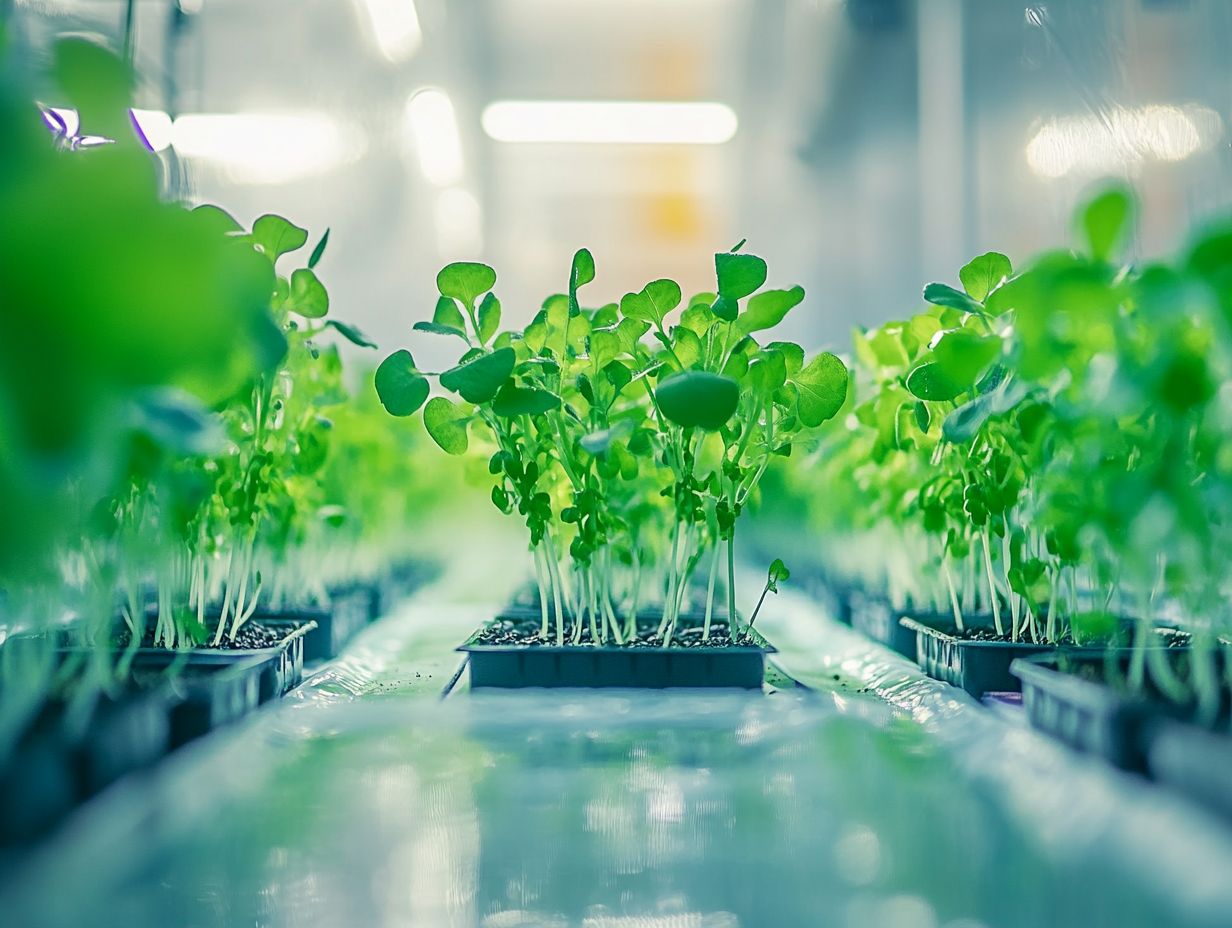
Keep your garden spotless! This is key to protecting your plants from disease. Neglecting hygiene can lead to pathogens that jeopardize root health and overall plant vitality.
Use clean tools and sterilize your equipment regularly with solutions like bleach or hydrogen peroxide. This practice substantially reduces contamination risks in your growing environment.
Check your nutrient solutions regularly to spot any signs of imbalance or decay. Timely interventions can go a long way in maintaining a healthier ecosystem.
By committing to these meticulous maintenance routines, you enhance crop resilience and yield while effectively warding off root diseases.
Symptoms of Root Disease in Hydroponics
Recognizing the symptoms of root disease in hydroponics is essential for early intervention. Look out for signs such as dark roots, stunted growth, and unhealthy transplants.
Addressing these symptoms promptly will help ensure the health and vitality of your hydroponic system.
Identifying Early Warning Signs
Spotting early warning signs of root disease is vital. This lets you act quickly before severe damage occurs.
By closely inspecting the root system, you can spot critical indicators such as changes in root color, which may appear darkened or discolored. This alteration hints at a decline in plant vigor, signaling the need for a more detailed examination.
Monitoring soil moisture levels and root temperature can further enhance your assessment of root health. Implement strategies like regular soil testing and ensuring proper drainage to mitigate risks.
Incorporating beneficial microbes into your practices will boost root resilience, enhancing overall plant health and reducing the likelihood of disease manifestation.
Preventing Root Disease in Hydroponics
Adopt best practices to prevent root disease. Focus on garden upkeep, pest control, and ensuring your roots are healthy.
By prioritizing these elements, you create an environment where your plants can thrive beautifully!
Best Practices for Preventing Root Disease
Implementing best practices to prevent root disease is essential. It starts with maintaining impeccable garden hygiene, managing nutrients effectively, and creating an environment that nurtures healthy roots through the introduction of beneficial bacteria.
To truly excel, regular monitoring of nutrient solutions is vital. This allows you to fine-tune pH levels (the acidity or alkalinity of the water) and nutrient concentrations, both of which play a crucial role in supporting root health. Sterilizing your tools before they touch the soil significantly reduces the risk of introducing harmful pathogens that could jeopardize the delicate balance of your garden ecosystem.
Incorporating beneficial bacteria, like Hydroguard, acts as a natural defense against root pathogens. This helps cultivate a thriving microbial community that boosts root vitality. By prioritizing these practices, you can create a flourishing garden environment that not only wards off disease but also enhances the overall resilience of your plants.
Treating Root Disease in Hydroponics
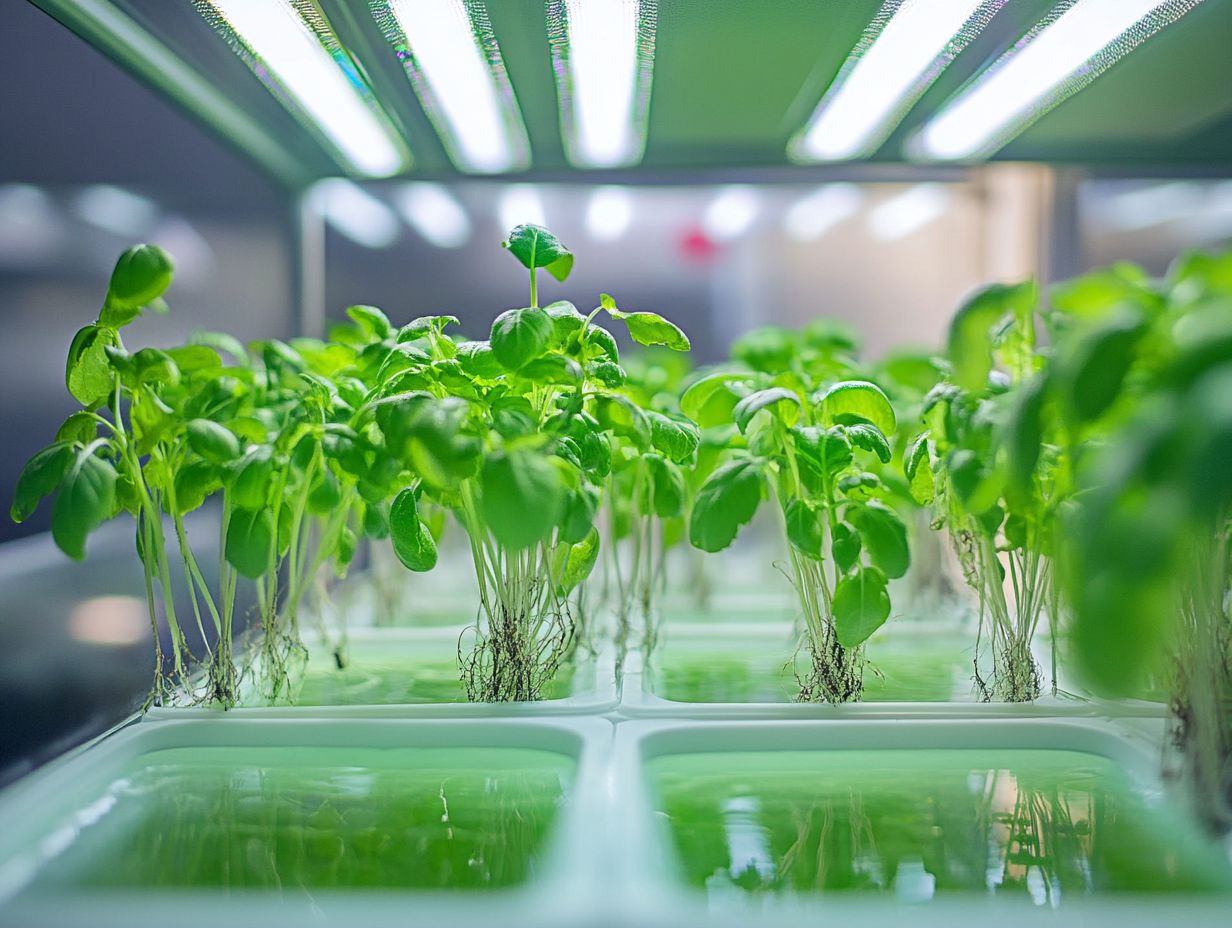
Addressing root disease in hydroponics necessitates employing effective methods that tackle the underlying causes while simultaneously promoting root health.
Consider utilizing microbial tea and other innovative root treatments designed to enhance the oxygenation process. This ensures your plants thrive in a balanced and nutrient-rich environment.
Effective Treatment Methods
Effective treatment methods for root diseases, especially root rot, often involve using products like Hydroguard and microbial tea, along with practices such as root pruning to eliminate damaged roots.
These strategies not only tackle immediate issues but also foster healthier root systems by enhancing aeration (the process of adding air to the soil) and nutrient absorption. Hydroguard harnesses beneficial bacteria to create a protective barrier against pathogens. Microbial tea provides a rich source of nutrients and microorganisms that bolster soil health.
The application methods for these products can differ. Hydroguard is typically mixed with water and applied directly to the root zone, while microbial tea is often brewed and used as a foliar spray or soil drench. Root pruning is equally vital. Careful removal of infected or decaying roots helps reduce disease spread and promotes quicker recovery for your plants.
Together, these methods constitute a holistic approach aimed at restoring plant vitality and ensuring long-term health.
Long-Term Maintenance for Healthy Roots in Hydroponic Systems
Maintaining healthy roots in hydroponics requires consistent practices that elevate environmental control and guarantee optimal conditions within your garden systems. This meticulous approach nurtures a robust nutrient reservoir, supporting the vitality of your plants.
Tips for Maintaining Healthy Roots in Hydroponics and Preventing Root Diseases
- Implement strategies such as regular garden maintenance.
- Utilize efficient nutrient management.
- Adopt proactive pest control measures.
These approaches are crucial for ensuring robust plant growth while minimizing the risk of root diseases.
For instance, check your pH levels regularly to optimize nutrient absorption. Monitoring water temperature helps you create a favorable environment. Incorporating beneficial microorganisms can significantly enhance soil health, providing natural pest deterrents and improving nutrient uptake.
Using protective barriers effectively prevents pests like fungus gnats from invading your growing area. Maintaining a clean garden space by removing debris and spent plants promotes air circulation and minimizes potential pest habitats. This fosters an overall healthier environment for your root systems. Regularly assessing moisture levels contributes to effective disease management as well.
Frequently Asked Questions
Start implementing these tips today for a vibrant and thriving garden!
What is root disease in hydroponics and why is it important to prevent?
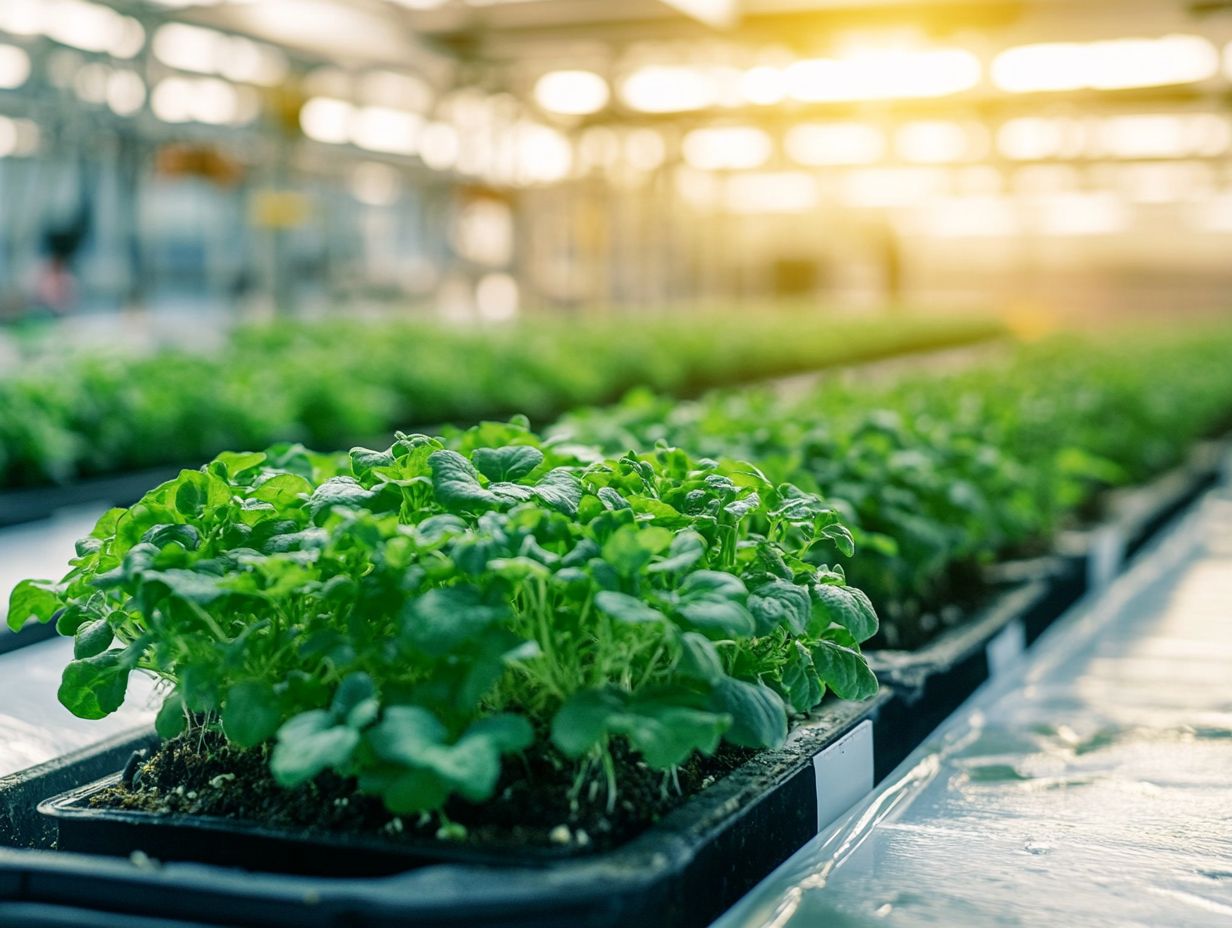
Root disease in hydroponics refers to the infection or damage of plant roots by pathogens, which can lead to plant death and reduced crop yield. Common culprits include pythium and Phytophthora. Preventing root disease is crucial, as it can significantly affect the success of a hydroponic system and result in financial losses.
What are some common root diseases in hydroponics?
Common root diseases in hydroponics include:
- Pythium
- Fusarium
- Phytophthora
- Rhizoctonia (soil-borne)
- Verticillium (airborne)
Understanding these plant pathogens helps you prevent disease effectively.
How can I prevent root disease in my hydroponic system?
To prevent root disease, maintain proper pH and nutrient levels. Regularly clean and sanitize equipment with a sterilizing solution and use high-quality water. Practice good plant hygiene by removing diseased material promptly. Ensure that oxygen levels are adequate.
Can I use chemical treatments to prevent root disease in hydroponics?
Chemical treatments are generally not recommended. They can harm beneficial bacteria and fungi in your system. It s better to rely on natural methods and good bacteria that need oxygen to thrive to maintain a healthy ecosystem.
Are there natural methods for preventing root disease in hydroponics?
Yes! Natural methods include:
- Using beneficial bacteria like Bacillus and Trichoderma
- Adding compost tea or other organic amendments
- Utilizing natural plant extracts with antifungal properties
- Incorporating air stones to improve oxygenation and promote root growth
How important is proper plant nutrition in preventing root disease in hydroponics?
Proper plant nutrition is vital. When plants have balanced nutrient levels, they can better defend against pathogens and resist infection. Regular garden hygiene and monitoring nutrient levels are essential parts of disease management.
Start implementing these strategies today to protect your hydroponic system!

